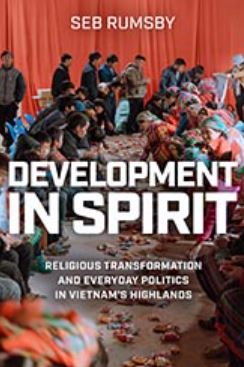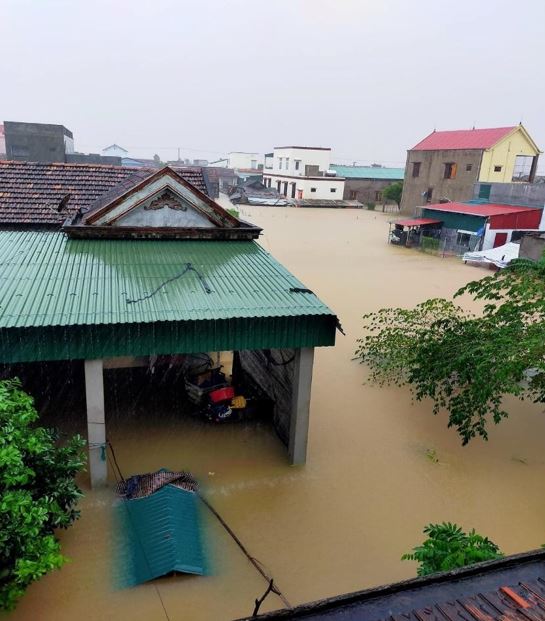The Vietnamese government has tried to discourage workers from early withdrawal through various means. As pensions are a key pillar of the social insurance system in Vietnam, the growing opt-out rate of people will create huge pressure on the government to support elderly people with no source of income in the future, writes Tu Phuong Nguyen
_______________________________________________
Rising trend of social insurance withdrawal
Since the early 2010s, the Vietnamese government has grappled with a rising number of employees withdrawing their social insurance early, and by doing so, forgoing their pensions. The law requires employers and employees to pay into employees’ social insurance premiums, which cover pension and maternity leave benefits. Employees are able to withdraw their social insurance premiums early, accessing them as lump sums, when they have quit their jobs and stopped paying social insurance for one year. From 2016 to 2022, 4.9 million people withdrew their social insurance premiums, with the number of claims for social insurance withdrawal increasing by about 10 per cent each year. In 2021 and 2022, about 400,000 people joined the social insurance system each year, but more than 860,000 left.
In 2015, the government failed to implement a legal revision that prevents employees from withdrawing their social insurance for one year after quitting their jobs. The revised law resulted in protests by thousands of workers, consequently pushing the government to reverse the change. The government is revising the law again in 2023 with an aim to limit the number of early withdrawals, albeit with a more cautious approach.
The issue of early withdrawal of social insurance in Vietnam reveals two important paradoxes observed in both employees’ behaviour and government’s responses. First, why have millions of Vietnamese employees chosen to withdraw their social insurance premiums despite the consequences of this decision for their future welfare?
While official statistics are unavailable, reports have suggested that many claims for social insurance withdrawals are made by factory workers employed in key export sectors such as garments, footwear, and other processing industries. The social insurance system is designed to support employees when their income is reduced or lost “due to sickness, maternity, workplace accident, occupational disease, retirement or death”. An employee who has participated in the social insurance scheme for at least 20 years is entitled to receive the pension and the accompanying free public health insurance when they reach their legal retirement age (which is currently 60 years 9 months for men and 56 for women). People who leave the system are able to re-join later. However, their social insurance contributions will begin from scratch, which means that they have a lower chance to be eligible for the pension. If staying in the social insurance system and accumulating social insurance for the pension are beneficial, then what explains people’s decisions to leave?
Second, the Vietnamese government has tried to discourage workers from early withdrawal through various means. As pensions are a key pillar of the social insurance system in Vietnam, the growing opt-out rate of people will create huge pressure on the government to support elderly people with no source of income in the future. Following the failed legal amendment in 2015, the government and union have increased public communications with an aim of raising awareness among workers about the disadvantages of early withdrawal and the benefits of pensions. Official discourse describes lump sum claimants as “only thinking about their short-term benefits”. At local social insurance offices where claims for social insurance benefits are processed, officials have tried to “persuade” lump sum claimants to withdraw their applications. The current legal revision, which prioritises the objective of reducing the number of early withdrawals in the coming years, is just another example of the state using law as a means to regulate and change people’s behaviour.
At the same time, the government has also made significant concessions and accommodations to workers’ needs and demands, in ways which might seem highly unusual in a Communist Party-ruled regime. Such a concession was evident in 2015 when, following workers’ protests and widespread discontent about the revised law, the government held dialogues with workers and responded to their wishes. The proviso of the law that allows employees to withdraw their social insurance one year after quitting their jobs remains in effect.
In the current round of legal revision (with the revised law to be passed in 2024 and effective in 2025), the state has become more sensitive to public opinion. The draft law proposes several measures to limit the number of early withdrawals in the coming years. One of the proposed changes is to reduce the amount of money that a person can withdraw early to 50 per cent of their total social insurance premiums, with the rest remaining in the social insurance fund managed by the state. Since this measure seeks to restrict employees’ early access to their social insurance premiums, government and union officials have raised concerns about its social practicality. They worry that, once passed, the new law might cause discontent and objections among factory workers. In comparative perspective, it is quite unusual for a one-party regime to be so cautious about implementing changes that have received little popular support.
How can we make sense of these policy and political challenges, as manifest in the growing number of Vietnamese employees choosing to leave the social insurance system, and in the government struggling to keep them in?
The political economy of precarious employment in Vietnam
At the heart of the problem is the rise of precarious employment in light manufacturing industries such as garments, footwear, and other processing industries. These industries, central to Vietnam’s export-oriented development policy since the economic reform agenda known as đổi mới, have created hundreds of thousands of jobs each year for many people who would otherwise have survived through subsistence agriculture. Many young people in their late teens and twenties have moved from their rural hometowns to work in industrialising regions and cities, making goods like clothing and shoes for global markets.
These sectors have been increasingly exposed to fluctuations and disruptions in global markets, which consequently leave workers at the bottom of the supply chain vulnerable and powerless. Before the COVID-19 pandemic, there were cases of foreign-owned factories suddenly closing down and their foreign bosses fleeing Vietnam while owing workers their wages and social insurance benefits. Casual, fixed-term contracts and oral work agreements have been on the rise, which allows employees’ legal rights and benefits to be routinely violated and prevents them from accessing work-related benefits for a decent standard of living.
Notably, precarisation has been a gendered process, as women account for 70 to 80 percent of the labour force in export industries and are subject to discrimination due to their mothering and care duties. While many jobs in these light manufacturing industries should fit into standard employment categories, low wages, long working hours, and the lack of statutory rights protection have made these forms of work precarious.
There has been considerable coverage of the economic struggles of factory workers. Despite the annual minimum wage rise, there persists a gap between minimum wage and workers’ living needs. According to a recent survey by the Institute of Workers and Trade Unions, 75 per cent of workers suggested that their income does not meet their daily needs, and 17 per cent often need to borrow money to get by. Only 8 per cent of respondents have savings from their income. Many workers live in poorly maintained private rental units near the industrial zones where their factories are based. A typical rental unit has just enough space for a family of two adults and two children. The common area where the family receive guests is also used for dining and sleeping. These units have a half story upstairs that can add extra sleeping space. On average, rent takes up approximately 20 per cent of workers’ income. As these workers have their legal residence registered in their rural hometowns, they are unable to access public services like healthcare and childcare in the destination provinces and cities but have to pay for private social services which are more expensive. The rising costs of living mean that workers have to rely on extra income earned from overtime hours to survive.
A key effect of the precarisation observed in light manufacturing industries has been the fragmentation of the working class, who has been unable to organise through their unions. The Vietnam General Confederation of Labour (VGCL) remains the only union in Vietnam and is one of the mass organisations affiliated with the Communist Party. The VGCL has various branches across different administrative levels that oversee the activities of enterprise unions. These enterprise unions are mostly filled by managerial and human resource staff.
Coping with precarity
Workers’ struggles over precarity subsequently shift into the sphere of social reproduction, the process of sustaining one’s life and that of their families. Their decisions to withdraw social insurance premiums reflect self-help measures to cope with financial hardship and economic uncertainty. Many low-income workers have viewed their social insurance premiums as a form of personal savings, part of which come from their hard-earned money. As the law allows early access to social insurance, workers who lose their jobs and are unable to find new employment are likely to consider claiming this money to pay for household expenses, such as childcare and children’s education, medical bills, and housing, or to help them switch to informal work, such as small trading activities.
Even though the struggles over precarity are individual in nature and vary according to workers’ particular needs, they have significant political ramifications. Since the COVID-19 pandemic struck light manufacturing industries, government and union officials have recognised the condition of precarity as one of the key factors leading to factory workers’ decisions to withdraw their social insurance premiums. While the act of early withdrawal is still portrayed in a negative light, official discourse has demonstrated greater sympathy with workers’ economic struggles. Between 2020 and 2022, waves of job losses and redundancies were reported in export industries as a result of the pandemic and the decline in consumer demands. In 2022, a record number of employees lodged their claims for social insurance lump sums, many desperately joining long queues and waiting since dawn at several local offices. Many people lost their jobs during the pandemic and were unable to find new employment in one year, making them eligible to claim the social insurance lump sum. When government support for laid-off workers still falls short of demands, early withdrawal of social insurance can help fill the gap. During the public debate about the revised draft law in 2023, the act of early withdrawal by workers experiencing precarity has seemed to receive some tacit political support.
Conclusion
The rise of precarious employment is an impending cause of social and political tensions and has posed a significant challenge to the state’s proclaimed agenda of improving social welfare and promoting equality. Workers’ self-help measures by means of withdrawing social insurance money, albeit individual in nature, are crucial for understanding political responses to precarity in the global supply chain. The paradoxes observed in workers’ behaviour and the government’s responses signify emerging political struggles in the realm of social reproduction, over how to sustain workers’ lives and those of their families in times of uncertainty. In the past and present revisions of Vietnam’s social insurance law, these self-help measures have proved to be a viable bargaining tool of low-income workers to pressure the state to accommodate their needs.
The revised draft law is scheduled for debate at upcoming sessions of the National Assembly, Vietnam’s national legislature. Before the upcoming legislative debates, the government is still weighing up the potential benefits and consequences of various measures that could effectively stem the rise of early withdrawals without causing social backlash. The new law, if passed in 2024, will take effect in 2025.
______________________________________________
*Banner photo by Hoang Kim Hung on Unsplash
*The views expressed in the blog are those of the authors alone. They do not reflect the position of the Saw Swee Hock Southeast Asia Centre, nor that of the London School of Economics and Political Science.





